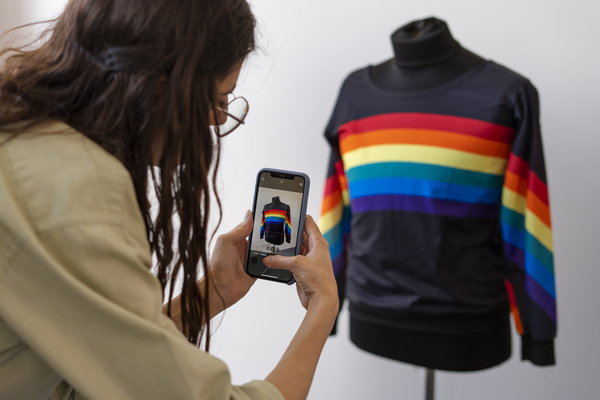Fashion and Technology: Smart Clothing Trends in 2025
The intersection between fashion and technology has never been more exciting. In 2025, smart clothing is transforming not only what we wear—but how we interact with our clothing and the world around us. From garments that track your health to fabrics that change color with your mood, smart fashion is blurring the line between science and style.

In this article, we’ll dive into the top smart clothing trends of 2025, explore how they’re being used, and look at what’s coming next in this futuristic fusion of function and fashion.
1. What Is Smart Clothing?
Smart clothing refers to garments embedded with technology—such as sensors, microchips, or conductive fibers—that allow them to interact with the wearer or the environment. These pieces go beyond aesthetics, offering real-time data, customization, and even enhanced performance.
Smart clothing is part of the broader wearable tech industry, which includes smartwatches, fitness bands, and AR glasses—but it’s far more integrated into everyday fashion.
2. Why Smart Clothing Is Trending in 2025
The growing popularity of smart clothing comes from several cultural and technological shifts:
- Health and wellness monitoring is now a daily priority.
- Remote work and hybrid lifestyles demand comfort with functionality.
- Sustainability and waste reduction have pushed innovation in smart fabrics.
- Fashion’s relationship with AI and data is stronger than ever.
Consumers want clothes that do more—and technology is answering the call.
What Else Would You Like to Know?
Choose below:
3. Key Smart Clothing Innovations in 2025
Let’s look at the most exciting developments shaping this space today:
👕 Health-Tracking Apparel
Smart garments can now track:
- Heart rate
- Body temperature
- Posture
- Stress levels
- Muscle activity
Popular with athletes and fitness enthusiasts, these clothes help wearers monitor their performance and recover faster. Companies like Nadi X (smart yoga pants) and Hexoskin (biometric shirts) are leading the charge.
👗 Adaptive Temperature Regulation
No need to layer or change outfits—some smart fabrics automatically heat up or cool down based on your body temperature and external conditions. Think of them like personal climate control built into your shirt or jacket.
👖 Self-Cleaning & Odor-Repelling Fabrics
Thanks to nanotechnology, some clothing can now resist dirt, bacteria, and smells. A dream for travelers or anyone with a busy schedule—less laundry, more wear.
🎨 Color-Changing and Reactive Materials
Clothes that shift color based on mood, UV exposure, or touch? It’s real. These materials react to environmental cues, creating expressive, futuristic fashion statements. Fashion becomes alive—both literally and metaphorically.
🧥 Haptic Feedback and Connectivity
Some smart jackets or shirts include haptic feedback systems that can vibrate or alert you with gentle taps. This has been used for:
- Navigation without looking at your phone
- Notifications in silent mode
- Assistive tools for the visually impaired
Wearable tech is evolving into communication tools, not just tracking devices.
4. Smart Clothing and Sustainability
Sustainability is a major driver behind smart fabric research. These technologies help reduce:
- Overwashing (with self-cleaning fabrics)
- Overbuying (with multi-functional garments)
- Energy waste (with climate-responsive materials)
Plus, modular clothing—where embedded tech can be swapped or upgraded—supports circular fashion models that reduce waste.
5. High-Fashion Meets High-Tech
Luxury fashion houses have entered the smart clothing scene with bold creativity:
- Tommy Hilfiger launched jackets that track environmental data.
- Ralph Lauren introduced smart polos that monitor heart rate.
- Balenciaga and Gucci are experimenting with augmented reality integration and blockchain for authentication.
Tech is no longer just practical—it’s prestigious.
6. Accessibility and Inclusivity
Smart fashion is improving lives beyond style:
- Smart shoes assist people with mobility issues.
- Clothing with voice assistance helps visually impaired individuals choose and match outfits.
- Wearable interfaces can connect with phones, homes, or even prosthetics.
This makes fashion more inclusive and functionally empowering.
7. Challenges and Ethical Questions
Of course, the rise of smart clothing also raises questions:
- Data privacy: Who owns the health and movement data collected?
- Disposability: How do we recycle or dispose of garments with tech?
- Affordability: Will smart fashion be accessible to everyone, or only to the wealthy?
Brands must ensure ethical development to keep tech-driven fashion both innovative and responsible.
Final Thoughts: Welcome to the Future of Fashion
In 2025, fashion is no longer passive—it’s interactive, intelligent, and intentional. Smart clothing is not just a trend—it’s the next evolution in how we dress, live, and connect.
Whether you’re an athlete, a tech lover, or just someone who loves convenience with flair, smart fashion offers a glimpse into a world where clothing isn’t just what you wear—it’s what you experience.
Top 5 Fashion Capitals of the World: Where Style Reigns Supreme
» See exclusive tips for your home







